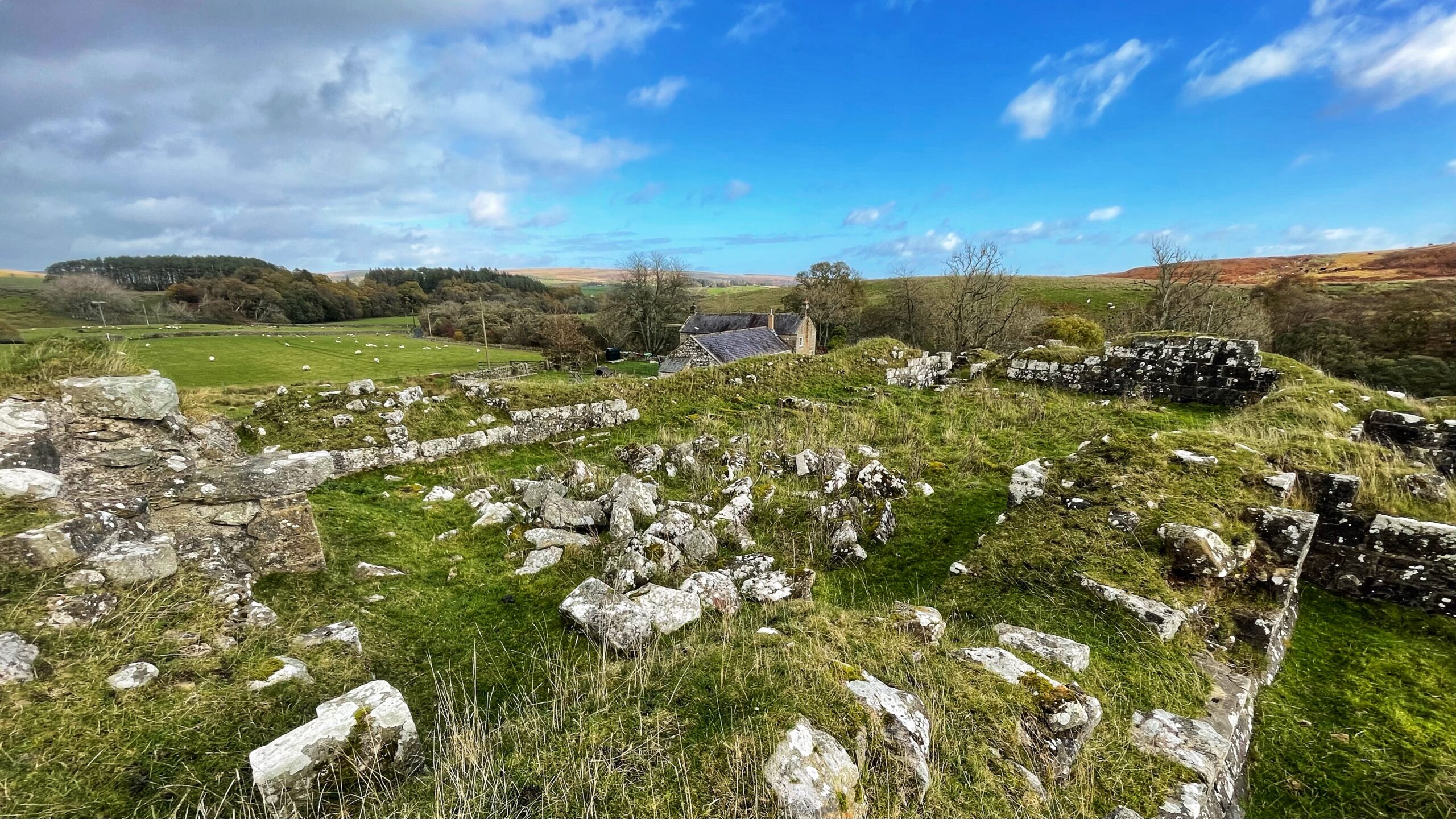The ruined Dally Castle in Northumberland sits on its grassy knoll like the ghost of a forgotten age. Only low walls and scattered stones remain, but they hint at a place that once surveyed the countryside with authority. The information board, in its pedantic way, insists that Dally was never a true castle at all. Yet fact seldom stands a chance against folklore.
The people of Tynedale have filled its ruins with stories. Giants hurling rocks across the valley, carriages rattling through secret tunnels behind headless horses, lovers defying feuding families—all find a home here. One enduring tale speaks of an underground passage stretching from Dally Castle to Tarset Castle, a mile to the north1Newcastle Chronicle – 25 March 1939. TARSET CASTLE. https://www.britishnewspaperarchive.co.uk/viewer/bl/0000865/19390325/064/0003. At midnight, it is said, the rumble of ghostly coaches can be heard below ground, their headless steeds thundering beneath the River North Tyne. Then, in 1888, workmen at Tarset uncovered a real passage—eight feet wide, twenty-four long, neatly built of dressed stone, and long since filled with sand and soil2Shields Daily News – 21 January 1888. INTERESTING DISCOVERY AT TARBET CASTLE. https://www.britishnewspaperarchive.co.uk/viewer/bl/0001168/18880121/131/0004.
Dally began life not as a fortress but as a hall-house, built for David Lindsey, Chamberlain of Scotland. He received the lands of Chirden in 1237 from Margaret, sister of Alexander II, and his grant was later confirmed by Henry III of England—a rare moment of Anglo-Scottish agreement. Construction likely followed soon after3Newcastle Journal – 15 August 1889. Page 4. Dally Castle. Letter. https://www.britishnewspaperarchive.co.uk/viewer/bl/0000242/18890815/061/0004.
The hall-house was a strong but practical dwelling, one of the earliest forms of fortified residence to endure in Northumberland. In the years when England and Scotland eyed each other across the border with habitual mistrust, such buildings were essential. Dally was among the first, and the craftsmanship of its remaining stonework suggests it was a house of some distinction.
The land drops steeply away on every side, and to the west lies a defensive ditch—twenty-five metres wide and ten deep. By the fourteenth century Dally had grown more martial in appearance, transformed into a tower-house with the addition of towers and perhaps another floor.
Peace proved its undoing. By the eighteenth century Dally was a hollow shell, and around 1800 its stones were carted off to build Dallycastle House and Mill. The ruins that remain today are quiet witnesses to a life that was once half history, half legend.
- 1Newcastle Chronicle – 25 March 1939. TARSET CASTLE. https://www.britishnewspaperarchive.co.uk/viewer/bl/0000865/19390325/064/0003
- 2Shields Daily News – 21 January 1888. INTERESTING DISCOVERY AT TARBET CASTLE. https://www.britishnewspaperarchive.co.uk/viewer/bl/0001168/18880121/131/0004
- 3Newcastle Journal – 15 August 1889. Page 4. Dally Castle. Letter. https://www.britishnewspaperarchive.co.uk/viewer/bl/0000242/18890815/061/0004

Leave a Reply